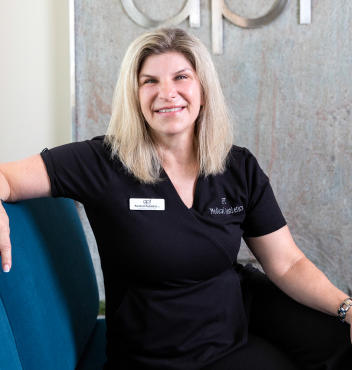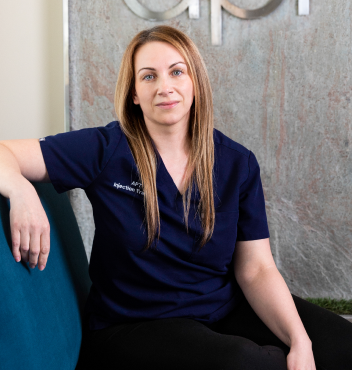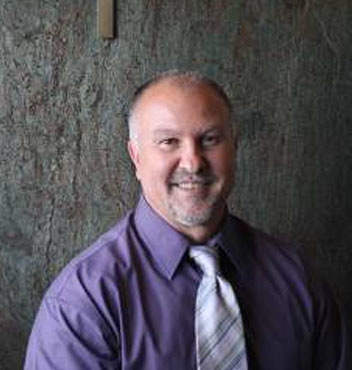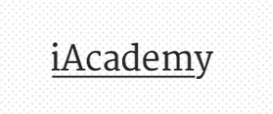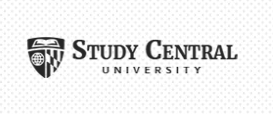blog
The Importance of Being Prepared to Treat Vascular Occlusions – A Critical Skill for Every Dermal Filler Injector

May 30 2025
Reading Time: 6 Minutes
Author:
You’ve completed your filler training, refined your technique, and started building your practice. Your consultations are going smoothly, your patient outcomes are strong, and your confidence is growing with each treatment. But then one day, something feels different. You inject a small amount of filler, and suddenly—your client flinches. The skin starts to blanch. You feel a wave of uncertainty. There’s discomfort, maybe a mottled appearance, and a creeping sense that something isn’t right. In that moment, only one question matters… Are you truly prepared to respond to a vascular occlusion?
Injectables like dermal fillers are an incredible advancement in aesthetic medicine. When administered correctly, they can restore lost volume, sculpt facial contours, and enhance natural features with precision and artistry. But with these powerful tools comes an equally important responsibility—understanding the medical risks involved and having the clinical readiness to respond when complications arise.
One of the most serious and time-sensitive complications a practitioner may face is a vascular occlusion. While rare, its consequences can be severe if not recognized and managed immediately. This type of emergency demands that every injector—regardless of experience level—be fully equipped with the knowledge, tools, and protocols to act fast and protect the patient.
At APT Injection Training, we don’t just teach you where to place filler—we teach you how to assess, plan, inject, and most importantly, how to manage complications safely and effectively. Our training programs are designed to ensure that every regulated healthcare professional who walks through our doors leaves not only with technical skills but with the confidence and clarity to handle any adverse event—including vascular occlusion.
In this post, we’ll walk you through exactly what a vascular occlusion is, what increases the risk of experiencing one, and why having comprehensive emergency preparedness is not optional—it’s essential. We’ll also provide practical tools and real-world advice that you can apply immediately in your own clinical setting, so that if you ever face this situation, you’ll know exactly what to do.
Because at the end of the day, your patient’s safety is everything—and your preparation is what ensures it. Let’s dive in.
What is a Vascular Occlusion and Why Should You Be Concerned?
A vascular occlusion occurs when dermal filler is inadvertently injected into or compresses a blood vessel, blocking the flow of blood to surrounding tissue. This interruption in circulation can cause pain, blanching, tissue ischemia, and if left untreated, necrosis. In extremely rare cases, it may also lead to blindness.
While vascular occlusions are relatively uncommon, they are among the most serious risks associated with dermal filler injections—especially in high-risk anatomical zones like the nose, glabella, nasolabial folds, and tear troughs.
The reality is, even experienced injectors can encounter vascular events, but those who are well-trained, alert, and fully prepared can respond immediately and appropriately, dramatically improving the outcome.
What Increases the Risk of a Vascular Occlusion?
There are many factors that can increase the risk of a vascular occlusion. While some risks are anatomical, others are directly related to injector training and technique.
Factors That Elevate Risk
- Lack of hands-on training – Theoretical knowledge is not enough. Without proper hands-on training with live models under expert supervision, injectors may not recognize warning signs or safe injection depths.
- Poor understanding of facial anatomy – Not all arteries and veins run the same course in every patient. A lack of detailed anatomical knowledge can result in high-risk injections, especially near danger zones.
- Using incorrect technique or needle size – Injecting too quickly, too deeply, or with high pressure increases risk, especially in confined vascular spaces.
- Inexperience with complication management – New injectors may freeze, panic, or delay intervention, worsening the outcome.
- Skipping aspirating or ignoring feedback – Skipping safety steps like aspiration, or brushing off signs like pain or blanching, can result in missed early warnings.
The takeaway? Preparation and training aren’t optional—they’re essential.
The Importance of Being Fully Prepared Before a Complication Happens
When a vascular occlusion occurs, time is tissue. A delay in response can mean the difference between full recovery and irreversible damage. That’s why being prepared ahead of time is the most effective way to protect your patient and your practice.
Preparedness includes not only technical knowledge, but also logistical systems, supplies, and team communication. Here’s why this matters.
- You won’t have time to research protocols in the moment—you must already know them.
- Your emergency supplies must be ready and accessible.
- Your team should be trained and able to support you immediately.
- Your confidence and clarity of action help reassure the patient and improve outcomes.
Emergency Protocols – What Every Injector Should Have in Place
So what does being prepared really mean? Let’s break it down into practical steps that every medical aesthetics clinic in Ontario should follow—especially if offering dermal filler treatments.
1 – Stock a Vascular Occlusion Emergency Kit
A proper vascular occlusion kit should be on hand, organized, and regularly checked. At minimum, it should include the following.
- Hyaluronidase (Hyalase) – To dissolve HA-based fillers in case of occlusion
- Syringes and needles – In various gauges for reconstitution and injection
- Sterile saline – For dilution and flushing
- Alcohol swabs and gloves – For clean technique
- Topical nitroglycerin paste – Optional, used with caution in protocols
- A detailed protocol printout – For step-by-step guidance
- Emergency contact list – Medical director, pharmacy, physician on call
- Consent and incident report forms – For documentation and follow-up
Store it in a clearly marked location and make sure all staff know where it is and what it’s for.
2 – Establish and Practice Vascular Occlusion Protocols
It’s not enough to have supplies—you need a plan. Establish clinic-wide protocols for identifying and treating vascular occlusion, including all of the below.
- Early signs to look for (blanching, pain, discoloration, livedo reticularis)
- Immediate steps to take (stop injection, massage, apply warmth, inject hyaluronidase)
- When to refer to a physician or emergency care
- Follow-up care timeline and documentation
Practice drills with your team regularly to keep response times sharp.
3 – Educate Your Team and Stay Up to Date
Your entire clinic team—from reception to medical assistants—should know what to do in an emergency. This includes who to call, where supplies are, and how to support the injector and patient.
In addition, stay current with evolving best practices by attending advanced training, complication management workshops, and clinical seminars. At APT Injection Training, we emphasize complication recognition and prevention at every level of our curriculum—so you’re never left unprepared.
A Story Every Injector Should Learn From
One of our intermediate course students shared a case from her early days as an injector. While treating the nasolabial fold, her patient mentioned a sharp, unusual pain followed by blanching. She paused immediately, checked capillary refill, and recognized early signs of a vascular occlusion. Because she had trained with APT and followed protocol, she administered hyaluronidase within minutes, reassured her patient, and scheduled close follow-up. The patient recovered fully.
That injector’s calm response was only possible because she was trained, prepared, and confident. That’s what training should do—empower you to act when it matters most.
Frequently Asked Question – What Should I Do If I Suspect a Vascular Occlusion?
If you suspect a vascular occlusion, stop injecting immediately and assess the area. Look for the following.
- Severe pain or pressure
- Blanching or whitening of the skin
- Discoloration or mottling
- Coolness to the touch
- Delayed capillary refill
Begin your vascular occlusion protocol, including warm compress, massage, and administration of hyaluronidase if using an HA-based filler. Document everything, inform your medical director, and follow up closely with the patient. If vision changes are reported, treat it as an emergency and refer to ophthalmology immediately.
A Final Word – Confidence Comes from Preparedness
Injecting dermal fillers is both an art and a science. With that comes a clinical responsibility to anticipate and manage risk—especially the risk of vascular occlusion. Being prepared doesn’t just make you a better injector—it makes you a safer one.
Patients trust you not only for results, but for the assurance that you know what to do when something goes wrong. That kind of trust starts with comprehensive training and a clinic culture built on safety, communication, and preparation.
Train with Confidence at APT Injection Training
At APT Injection Training, we believe that clinical excellence in medical aesthetics doesn’t come from simply learning how to inject—it comes from understanding why, when, and how to inject safely, precisely, and with complete readiness for anything that may arise. In a field where patient safety, outcomes, and trust are everything, your preparation and education are the foundation of your success.
That’s why our training programs go far beyond technique. We provide regulated healthcare professionals across Ontario and the Greater Toronto Area (GTA) with the knowledge, hands-on practice, and complication management protocols needed to perform injectables with both artistry and responsibility.
Our expert-led injectables training includes in-depth modules on the below.
- Detailed facial vascular anatomy – so you understand not only where to inject, but also where not to inject
- Safe and effective dermal filler techniques – with hands-on experience using live models in a closely supervised setting
- Emergency preparedness and vascular occlusion protocols – so you are equipped to act quickly and appropriately in the event of complications
- Evidence-based practice principles – to help you build a reputable, ethical, and results-driven clinical approach
- Support beyond the classroom – including continued mentorship, resources, and access to a community of experienced professionals
Whether you’re a beginner injector just entering the world of aesthetic medicine or an intermediate practitioner ready to expand your skill set and confidence, our team at APT is here to help you become not just a great injector—but a safe and trusted one.
📞 Call APT Injection Training today to speak with our program advisors, ask questions about course eligibility, or get started on your training journey. We’re located in Oakville, Ontario, and proudly serve healthcare professionals throughout the GTA and beyond.
Your next level starts here—with training designed for the real world of aesthetic medicine. Let’s build your future together.
Tips to be a
Successful Injector!
Free E-Book download
 Student Log in
Student Log in
 1267 Cornwall Rd, Unit 300, Oakville, Ontario L6J 7T5
1267 Cornwall Rd, Unit 300, Oakville, Ontario L6J 7T5

 (289) 271-5718
(289) 271-5718






